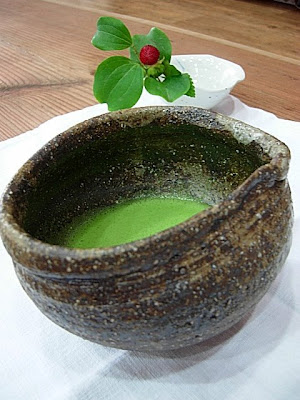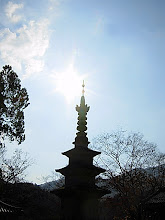
One awakes early in the morning, earlier than most. One draws the water, and boils it. It's time for tea. This morning one fetches an inexpensive glass container. In it, a crushed mix of mainly dark green-black leaves are accented by pieces if earthy brown and light green. The smell escapes into air as the cheap, warped lid is twisted loose- rich spice, fresh musk, evergreen.

With the help of a simple bamboo scoop the dry leaves are scooped from the container and then carefully guided into the top opening of a pre-warmed Kim Kyoung Soo, grey, moon and cloud ceramic tea pot. These crushed leaves wait for the hot water that descends upon them. The lid covers the leaves. In the warming darkness of the tea pot, tea is made.
The resulting amber liquid is poured out and served. The smell is warming and comforting. As the glow shines softly through the window, it's time to drink the tea that was named so.

Most black teas are 90% oxidized. This tea is only 70% oxidized due to its production method.
This tea is hand picked in the fresh mountain valley of Hadong. It is gathered then dried in the sun for four to eight hours. After which it is violently hand rolled on a fibrous rush mat that causes the leaves to break and tear, exposing their exposed enzymes to the oxygen of the clean mountain air. They are left to oxidize in the shade for forty-eight hours, the leaves take in the mountain air deeply. Next they are spread out on the floor of a hot room with the ondol, traditional Korean floor heating, at 35-40 Degrees Centigrade until they are dry. The leaves are then hand crushed and the dust is sifted out the traditional way using an old traditional sifter before being packaged.

The first sensation one tunes into when drinking this tea is menthol, an evergreen freshness. These flavours share tastebuds with light, sweet, acidic citric orange and a spiciness that can be described as cinnamony or perhaps as medicinal. Astringency can be felt on the tip of ones tongue and a vague dryness deep in the throat. A subtle floral taste is left in the nose. The strength of the menthol evergreen, the citric orange, and the spicy medicinal flavours unmistakably vary between different sessions when brewing vessel, water quality, and amount of dry leaves used is manipulated. A fun tea to play with, full of light mellow qi. A nice way to wake up.
Peace





















 This table is alive.
This table is alive.


















